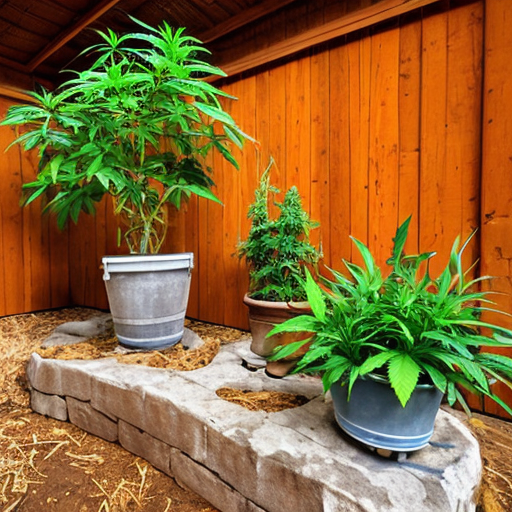
Defoliating and Trimming Cannabis: A Step-by-Step Guide
Defoliation and trimming can optimize airflow, light exposure, and overall plant health, leading to larger and more potent buds. Here’s how to do it effectively at each stage of growth.
What is Defoliation?
Defoliation is the process of removing excess leaves, especially large fan leaves, to improve airflow and light penetration through the plant canopy. This technique helps redirect energy to bud production rather than leaf growth.
When to Defoliate Cannabis Plants
Defoliation can be done during two main phases:
1. Vegetative Stage: To shape the plant and promote bushier growth.
2. Flowering Stage: To enhance light exposure to lower buds and increase yield.
Step 1: Defoliating in the Vegetative Stage
In the vegetative stage, defoliation should be minimal but strategic. The goal is to shape the plant and improve airflow without overly stressing it.
1. Identify Large Fan Leaves: Look for larger fan leaves that block light from lower branches and interior growth sites.
2. Remove Blocking Leaves: Gently remove the largest fan leaves, especially those in the center of the plant. Cut close to the main stem with sharp scissors or pruning shears.
3. Avoid Overdoing It: Never remove more than 20–30% of the plant’s leaves in a single session, as this can stunt growth.
4. Give Time to Recover: Space out defoliation sessions by at least a week, allowing the plant to recover fully between sessions.
Step 2: Defoliating in the Flowering Stage
During the flowering stage, defoliation can help direct the plant’s energy toward bud production. This should be done carefully, as over-trimming can reduce yields and stress the plant.
1. Target Larger Fan Leaves Again: Focus on fan leaves that are shading bud sites or blocking airflow around the buds.
2. Prioritize the Lower and Inner Canopy: Removing leaves from the lower and inner parts of the plant can improve airflow and reduce the chance of mold.
3. Avoid Leaves Attached to Buds: Leave the small sugar leaves near the buds, as they contain resin and help support bud development.
4. Limit Defoliation in Late Flowering: After about 3–4 weeks into flowering, defoliation should be minimized to avoid stressing the plant.
What is Trimming?
Trimming removes excess leaves around the buds, which enhances the appearance, quality, and smokability of the final product. Trimming is done after harvest, either before or after drying.
Step 3: Pre-Harvest Preparation
1. Stop Defoliation a Week Before Harvest: Give your plants a week of minimal disturbance to allow for optimal resin and terpene production.
2. Prepare Your Tools: Use clean, sharp trimming scissors or pruners to make clean cuts and avoid damaging buds.
Step 4: Wet Trimming vs. Dry Trimming
Trimming can be done either right after harvest (wet trimming) or after the buds have dried (dry trimming). Here’s a quick comparison:
• Wet Trimming: Easier for cutting larger fan leaves; ideal if you live in a humid area to prevent mold.
• Dry Trimming: Allows buds to retain more structure; best in dry environments where humidity is less of a concern.
Step 5: How to Trim After Harvest
1. Set Up Your Workspace: Use a clean table, gloves, and a tray for catching trimmed leaves.
2. Separate the Buds: Cut individual buds from the branches and remove large fan leaves if they remain.
3. Trim Away Sugar Leaves: Carefully trim small sugar leaves around the buds, leaving about 1/4 inch from the surface. This will give the buds a neat appearance.
4. Shape Each Bud: Trim buds to a rounded, dense shape, taking care not to remove too much.
Tips for Successful Defoliation and Trimming
• Keep Scissors Clean: Sticky resin can build up, so clean your scissors with rubbing alcohol as needed.
• Go Slow and Be Gentle: This prevents damaging buds and allows you to trim precisely.
• Save Trimmed Leaves: Sugar leaves can be used to make edibles, hash, or extracts.
Benefits of Defoliation and Trimming
• Better Airflow: Reduces the risk of mold and pests.
• Improved Light Exposure: Increases the yield of lower buds.
• Enhanced Bud Quality: Trimming improves the appearance and consistency of the final product.
Mastering defoliation and trimming takes practice, but these techniques can dramatically improve your cannabis harvest by increasing yield, potency, and quality. Enjoy the process, and happy growing!